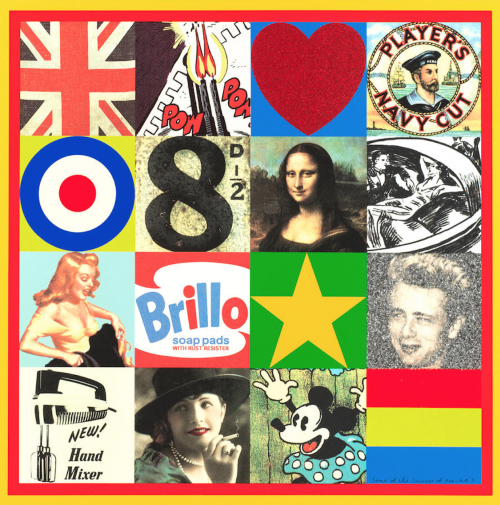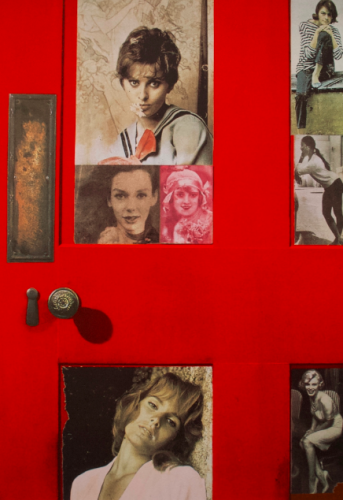About the artist:
British painter, sculptor and printmaker, he is known as one of the leading figures of British Pop Art.
Peter Blake studied at Gravesend School of Art before being accepted into the Royal College of Art, London,
where he studied alongside other key British Pop artists, David Hockney, R.B. Kitaj, Joe Tilson, Allen Jones and
Peter Phillips.
During the late 1950s, Blake became one of the best known British pop artists. His early work is dominated by
two major subjects: fantastic scenes from the world of the circus and naturalistic paintings with autobiographic
elements. The imitation of the popular image world of event posters, which Blake combined with portraits, was
typical of his work. Circus characters and children reading comic books are among the artist's typical motifs. In
style and content both types of pictures paved the way for English Pop Art.
In 1959, inspired by reproductions of Robert Rauschenberg and Jasper Johns, Blake began to paint collage-like
pictures of pop musicians and filmstars and to produce assemblages made of recycled material, postcards and
other items.
In 1961, artist was included in the "Young Contemporaries" exhibition at London's Whitechapel Gallery. The show
was vital in launching the careers of several younger members of the Pop Art scene, and Blake's work was shown
alongside that of David Hockney and Ronald Kitaj. In the same year, he received the John Moores prize with his
painting ‘Self Portrait With Badges’ (now owned by Tate).
In 1962, Blake had his first solo exhibition at the Portal Gallery.
In 1967, through his art dealer Robert Fraser, he was commissioned to design the cover of the world-famous
album by The Beatles "Sgt. Pepper's Lonely Hearts Club Band", that made Blake really famous.
Artist's first retrospective exhibition was held as early as 1969 at the City Art Gallery, Bristol, with subsequent
retrospectives at the Stedelijk Museum Amsterdam, at the Tate Gallery, the Museo de Bellas Artes de Bilbao.
In 1975, Peter Blake was one of the founding members of the "Brotherhood of Ruralists". His imagery changed
under the influence of this group of artists and his rural surroundings in Wellow on Avon. The members expected
life in the country to provide them with new artistic impulses and moral renewal. Just like the pre-Raffaelites, they
strove for an aesthetic permeation of all parts of life. Childhood memories, fairy tales and elves, depicted in
realistic style using techniques of the old masters, became his favourite subjects.
In 1981, he was elected as a member of the Royal Academy, and was awarded knighthood for his services to art
in 2002.
Peter Blake often referred to as the Godfather of British Pop Art. Though Sir Peter's latest works are very different
from the pop art style for which he is most well-known, they still contain an essential element of pop art doctrine:
nostalgia. He combines this with his love for collage and his penchant for surreal juxtapositions to create a series
of images that are at once comforting, comedic, witty, evocative and surprising.
Blake's artworks are in the major collections of Hayward Gallery in London, Museum Ludwig in Cologne, Museum
Moderner Kunst in Vienna, Museum of Modern Art in New York, Royal College of Art in London, Thyssen-
Bornemisza Collection in Madrid, Victoria and Albert Museum in London.





